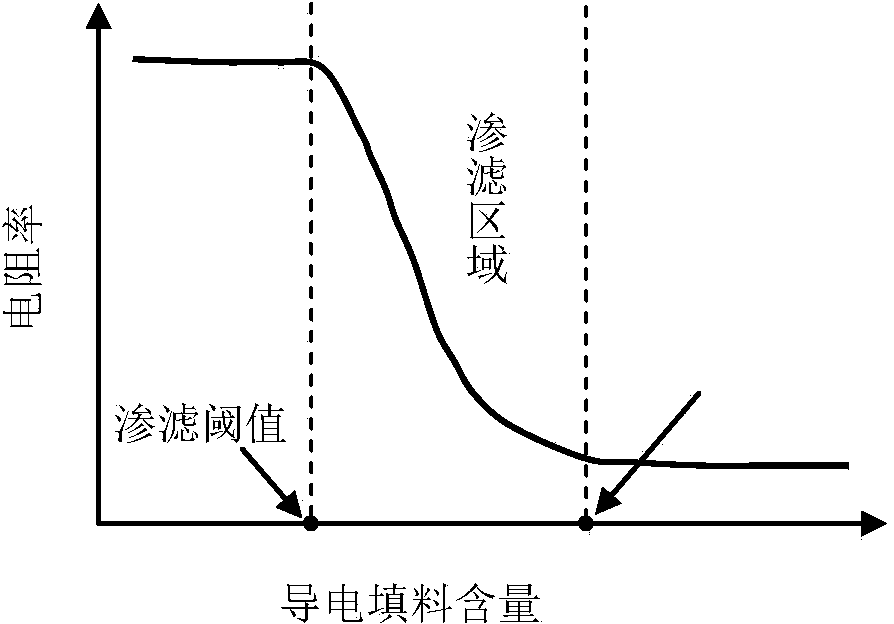Method for preparing sensing type plastic geogrids
A geogrid and sensing technology, applied in the field of civil engineering, can solve the problems of inability to strengthen the deformation information detection of solids, single reinforcement effect, increase the difficulty and cost of detection, etc., and achieve the effect of avoiding the reduction of deformation test accuracy.
- Summary
- Abstract
- Description
- Claims
- Application Information
AI Technical Summary
Problems solved by technology
Method used
Image
Examples
preparation example Construction
[0033] The preparation method of sensory plastic geogrid of the present invention, the steps are as follows:
[0034] (1) Determination of the filling amount of superconducting carbon black
[0035] In order to obtain the required composite material, the development of the composite material is carried out in the laboratory by means of an experiment. High-density polyethylene is selected as the base material, and the conductive masterbatch added with superconducting carbon black is used as the filler. The conductive masterbatch accounts for the mass of the mixture. In the range of 40% to 60%, the two are melted and mixed, plasticized and extruded, then cooled and granulated to obtain a conductive composite material. In order to ensure the uniformity of the composite material, it is mixed and plasticized for several times. Granulate and use after obtaining the desired composite material.
[0036] (2) Sensitive polymer deformation-resistance calibration
[0037] The tensile te...
example 1
[0044]Example 1: Preparation of sensory plastic geogrid for roads
[0045] In road engineering, geogrids are mainly used to reinforce soil and prevent settlement. In order to prepare sensor-type plastic geogrids suitable for roads, a conductive composite material with a filler ratio of 45% was selected (its normalized resistivity and strain The relation is Such as Figure 5 Shown), the production process of the ratio composite material is as follows: the base material HDPE and the superconducting carbon black master batch are prepared and mixed according to the mass ratio; the mixture of the two is melted and extruded through an extruder, and pelletized after cooling. The high-density polyethylene composite material was obtained. In order to ensure the uniformity of carbon black in the composite material, the prepared composite material particles were re-melted and re-granulated. The re-granulated process was repeated twice to obtain a composite material with good uniformity...
example 2
[0046] Example 2: Preparation of sensor-type plastic geogrid for mines
[0047] During mine production operations, the stability and firmness of the roadway is the guarantee of safe production. To reinforce the roadway, the method of burying and hanging geogrid is usually used, which not only improves the robustness of the roadway, but also reduces the construction cost. But even so, due to factors such as confining pressure, the roadway wall will still be deformed and damaged, or even collapsed, resulting in loss of life and property. If special equipment is used for regular inspection, it will be time-consuming, laborious, and inconvenient to operate. The above problems can be solved by laying sensor-type geogrid. The composite conductive high-density polyethylene composite material (carbon black is the conductive filler) with a filler mass ratio of 48% is selected as the raw material (the relationship between the normalized resistivity and strain is Ω ...
PUM
 Login to View More
Login to View More Abstract
Description
Claims
Application Information
 Login to View More
Login to View More - R&D
- Intellectual Property
- Life Sciences
- Materials
- Tech Scout
- Unparalleled Data Quality
- Higher Quality Content
- 60% Fewer Hallucinations
Browse by: Latest US Patents, China's latest patents, Technical Efficacy Thesaurus, Application Domain, Technology Topic, Popular Technical Reports.
© 2025 PatSnap. All rights reserved.Legal|Privacy policy|Modern Slavery Act Transparency Statement|Sitemap|About US| Contact US: help@patsnap.com



